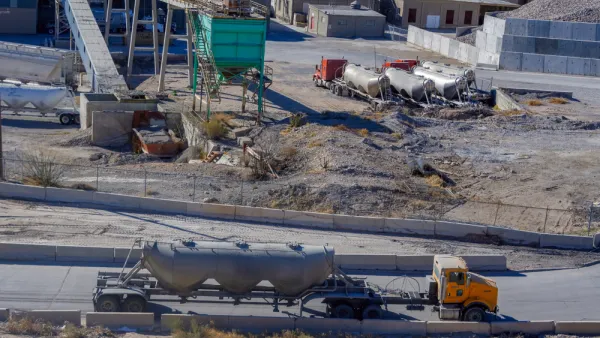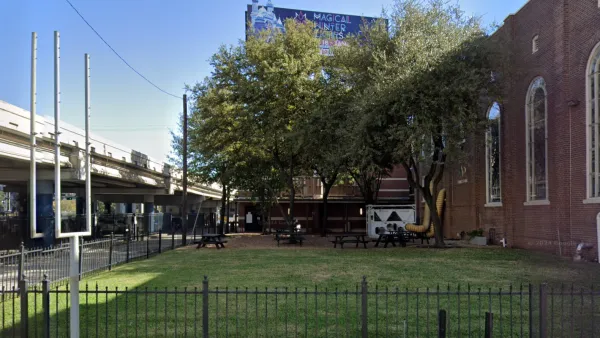Houston doesn't compare well with other cities when it comes to locating polluting industrial uses near residential neighborhoods. Blame the city's lack of zoning, according to new research.

"If you read [the Houston Chronicle's] Chemical Breakdown series on the poor oversight of Houston's repositories of toxic material, you already know that potentially dangerous stuff could be lurking in your backyard," according to an article by Lydia DePillis.
But the poor regulation of polluters in only half of a uniquely Houstonian threat: "That might be more common than it is in other Texas cities, according to a new analysis, because of Houston's longstanding resistance to zoning."
The new analysis DePillis mentions is contained in a working paper by economists at the University of Pittsburgh and the University of Washington, which examines the influence of zoning in the city of Chicago and several Texas cities.
Judging by the distribution of toxics-emitting facilities on a list maintained by the Environmental Protection Agency — which you can see for Houston here — the economists did find that polluters tend to be more densely clustered in other large Texas cities with fairly traditional zoning codes. In Houston, 65 percent of the city is within one mile of a facility in the toxic release inventory. That number is 30 percent, 44 percent, and 43 percent for Austin, San Antonio, and Dallas respectfully.
As for why economists were compelled to chime in on matters of land use regulation, DePillis notes that homes near sources of pollution tend to have lower property values. Therefore, huge swaths of Houston are less valuable than they might have been if zoning had separated polluting industrial uses out from residential areas.
FULL STORY: How zoning impacts your proximity to pollution

Analysis: Cybertruck Fatality Rate Far Exceeds That of Ford Pinto
The Tesla Cybertruck was recalled seven times last year.

National Parks Layoffs Will Cause Communities to Lose Billions
Thousands of essential park workers were laid off this week, just before the busy spring break season.

Retro-silient?: America’s First “Eco-burb,” The Woodlands Turns 50
A master-planned community north of Houston offers lessons on green infrastructure and resilient design, but falls short of its founder’s lofty affordability and walkability goals.

Test News Post 1
This is a summary

Analysis: Cybertruck Fatality Rate Far Exceeds That of Ford Pinto
The Tesla Cybertruck was recalled seven times last year.

Test News Headline 46
Test for the image on the front page.
Urban Design for Planners 1: Software Tools
This six-course series explores essential urban design concepts using open source software and equips planners with the tools they need to participate fully in the urban design process.
Planning for Universal Design
Learn the tools for implementing Universal Design in planning regulations.
EMC Planning Group, Inc.
Planetizen
Planetizen
Mpact (formerly Rail~Volution)
Great Falls Development Authority, Inc.
HUDs Office of Policy Development and Research
NYU Wagner Graduate School of Public Service




























